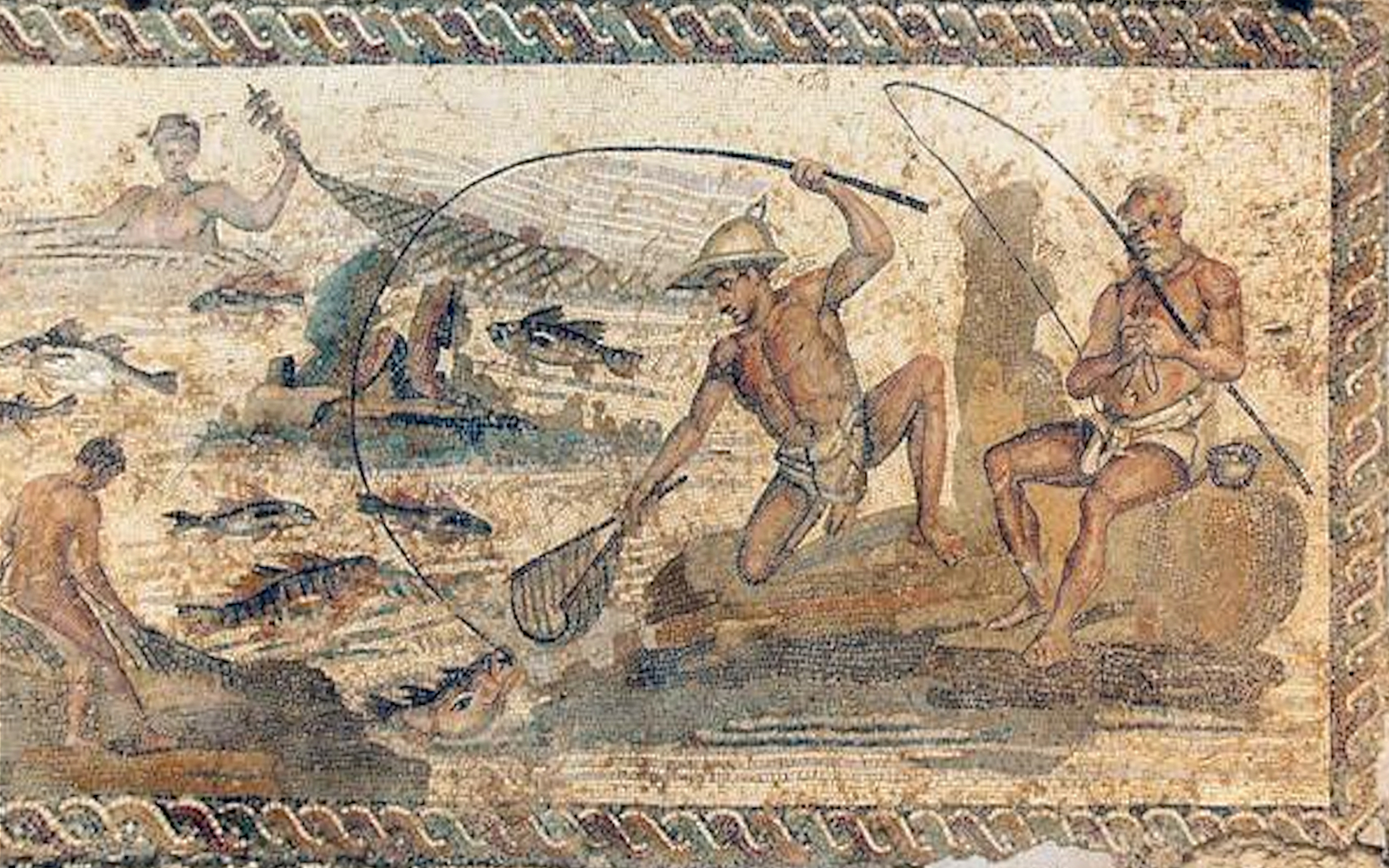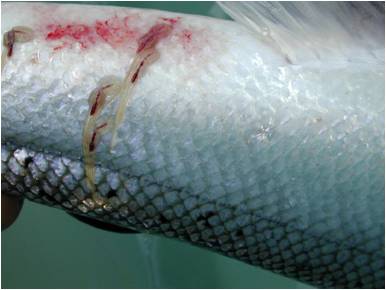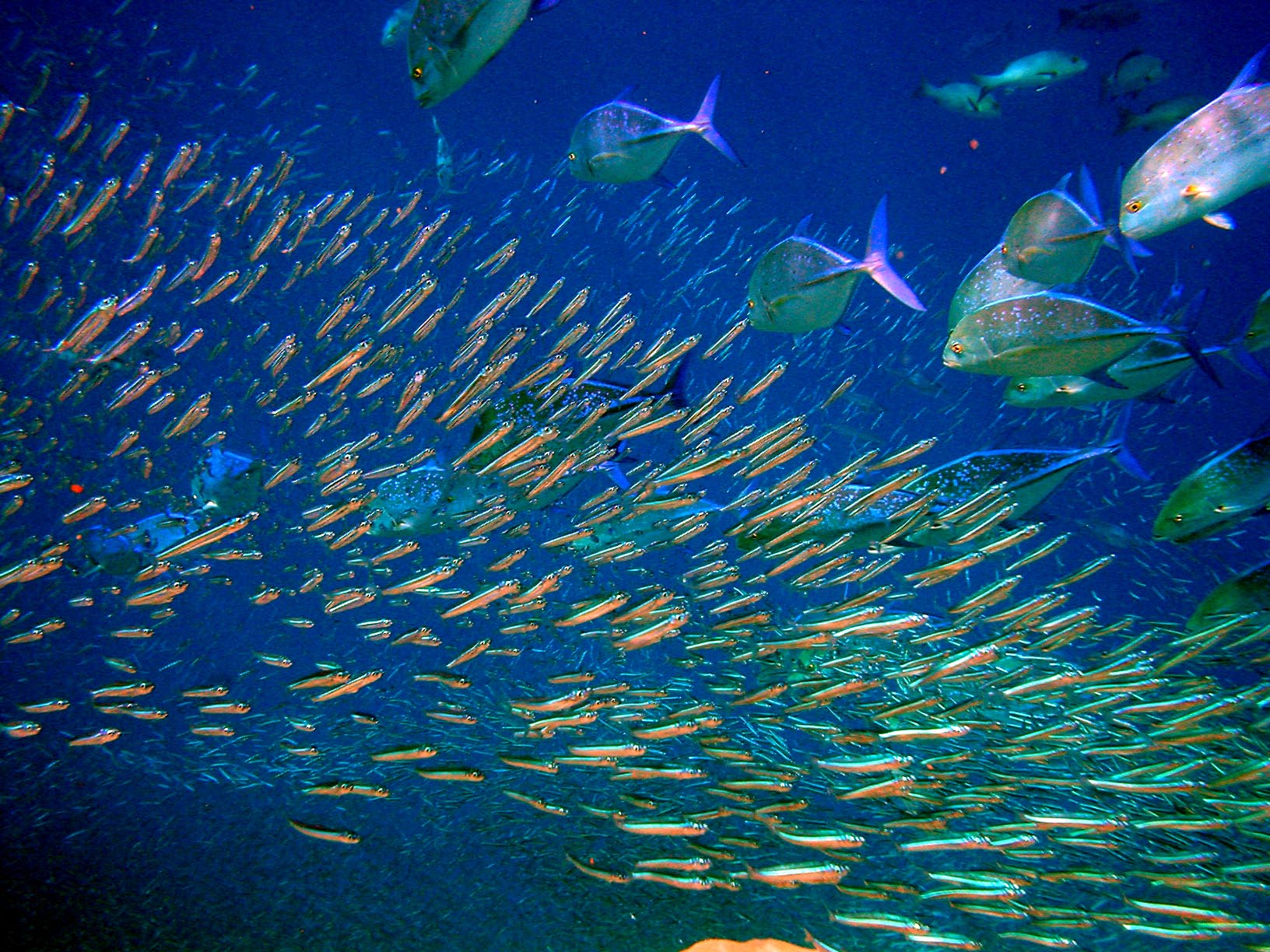|
Sebastes Schlegelii
''Sebastes schlegelii'', also known as the Korean rockfish, northern black seaperch, black rockfish, and woo-reok (우럭) in Korean, is a predatory species of marine ray-finned fish belonging to the subfamily Sebastinae, the rockfishes, part of the family Scorpaenidae It is found in the Northwest Pacific Ocean. Taxonomy ''Sebastes schlegeli '' was first formally described in 1880 by the German zoologist and paleontologist Franz Martin Hilgendorf with the type locality given as Tokyo and Hakodate in Japan. Some authorities place this species in the subgenus ''Acutomentum'', of which it is the type species. The specific name honours the German ornithologist and herpetologist Hermann Schlegel, who, cowrote ''Fauna Japonica'' with Coenraad Jacob Temminck in which they reported this species as '' S. inermis''. Distribution The species is found in the Northwest Pacific Ocean, off China, the Korean Peninsula and Japan. Description ''S. schlegelii'' are blackish with black pelvi ... [...More Info...] [...Related Items...] OR: [Wikipedia] [Google] [Baidu] |
Franz Martin Hilgendorf
Franz Martin Hilgendorf (5 December 1839 – 5 July 1904) was a German zoologist and paleontologist. Hilgendorf's research on fossil snails from the Steinheim crater in the early 1860s became a palaeontological evidence for the theory of evolution published by Charles Darwin in 1859. Life and work Franz Hilgendorf was born on 5 December 1839 in Neudamm (Mark Brandenburg). Between 1851 and 1854 he went to a gymnasium in Königsberg (Neumark) and later to the Gymnasium ''Zum Grauen Kloster'' (Grey Monastery) in Berlin where he graduated in 1858. In 1859 he started studying philology at the University of Berlin. After four semesters he changed to the University of Tübingen. In the summer of 1862 he joined an excavation by Friedrich August Quenstedt in the Steinheim crater. In 1863 Hilgendorf received his Ph.D. for work related to this excavation. He finished his research on the fossils during his time at the Museum für Naturkunde in Berlin. In 1868, Hilgendorf beca ... [...More Info...] [...Related Items...] OR: [Wikipedia] [Google] [Baidu] |
Sebastes Inermis
''Sebastes inermis'', the Japanese red seaperch or dark-banded rockfish, is a species of marine ray-finned fish belonging to the subfamily Sebastinae, the rockfishes, part of the family Scorpaenidae. It is found in the northwestern Pacific Ocean. This species is known as ''mebaru'' ( メバル/鮴) in Japan and as ''bollak'' (볼락) in Korea. Taxonomy ''Sebastes inermis'' was first formally described in 1829 by the French zoologist Georges Cuvier with the type locality given as Japan. Together with '' S. ventricosus'' and '' S. cheni'' these three taxa form a species complex and have been treated as a single species in the past. Some authorities place this species complex in the subgenus ''Mebarus''. The specific name ''inermis'' means “unarmed”, a reference to the relatively small spines on the head. Description ''Sebastes inermis'' has sharp lachrymal spines with the rest of the spines on the head are rather weak. The caudal fin is not strongly emarginate. It has a da ... [...More Info...] [...Related Items...] OR: [Wikipedia] [Google] [Baidu] |
Fish Of Russia
Fish are aquatic, craniate, gill-bearing animals that lack limbs with digits. Included in this definition are the living hagfish, lampreys, and cartilaginous and bony fish as well as various extinct related groups. Approximately 95% of living fish species are ray-finned fish, belonging to the class Actinopterygii, with around 99% of those being teleosts. The earliest organisms that can be classified as fish were soft-bodied chordates that first appeared during the Cambrian period. Although they lacked a true spine, they possessed notochords which allowed them to be more agile than their invertebrate counterparts. Fish would continue to evolve through the Paleozoic era, diversifying into a wide variety of forms. Many fish of the Paleozoic developed external armor that protected them from predators. The first fish with jaws appeared in the Silurian period, after which many (such as sharks) became formidable marine predators rather than just the prey of arthropods. Most fis ... [...More Info...] [...Related Items...] OR: [Wikipedia] [Google] [Baidu] |
Fish Of Japan
Fish are Aquatic animal, aquatic, craniate, gill-bearing animals that lack Limb (anatomy), limbs with Digit (anatomy), digits. Included in this definition are the living hagfish, lampreys, and Chondrichthyes, cartilaginous and bony fish as well as various extinct related groups. Approximately 95% of living fish species are ray-finned fish, belonging to the class Actinopterygii, with around 99% of those being teleosts. The earliest organisms that can be classified as fish were soft-bodied chordates that first appeared during the Cambrian period. Although they lacked a vertebrate, true spine, they possessed notochords which allowed them to be more agile than their invertebrate counterparts. Fish would continue to evolve through the Paleozoic era, diversifying into a wide variety of forms. Many fish of the Paleozoic developed placodermi, external armor that protected them from predators. The first fish with jaws appeared in the Silurian period, after which many (such as sharks) b ... [...More Info...] [...Related Items...] OR: [Wikipedia] [Google] [Baidu] |
Angling
Angling is a fishing technique that uses a fish hook or "angle" (from Old English ''angol'') attached to a fishing line to tether individual fish in the mouth. The fishing line is usually manipulated via a fishing rod, although rodless techniques such as handlining and longlining also exist. Modern angling rods are usually fitted with a reel that functions as a cranking device for storing, retrieving and releasing out the line, although Tenkara fishing and cane pole fishing are two rod-angling methods that do not use any reel. The hook itself can be additionally weighted with a dense tackle called a sinker, and is typically dressed with an appetizing bait to attract the fish and enticing it into swallowing the hook, but sometimes an inedible fake bait with multiple attached hooks (known as a lure) is used instead of a single hook with edible bait. A bite indicator, such as a float or a quiver tip, is often used to relay underwater status of the hook to the surface. ... [...More Info...] [...Related Items...] OR: [Wikipedia] [Google] [Baidu] |
Reef
A reef is a ridge or shoal of rock, coral or similar relatively stable material, lying beneath the surface of a natural body of water. Many reefs result from natural, abiotic component, abiotic processes—deposition (geology), deposition of sand, wave erosion planing down rock outcrops, etc.—but there are also reefs such as the coral reefs of tropical waters formed by biotic component, biotic processes dominated by corals and coralline algae, and artificial reefs such as shipwrecks and other anthropogenic underwater structures may occur intentionally or as the result of an accident, and sometimes have a designed role in enhancing the physical complexity of featureless sand bottoms, to attract a more diverse assemblage of organisms. Reefs are often quite near to the surface, but not all definitions require this. Earth's largest coral reef system is the Great Barrier Reef in Australia, at a length of over . Biotic There is a variety of biotic reef types, including oyster ... [...More Info...] [...Related Items...] OR: [Wikipedia] [Google] [Baidu] |
Commercial Fisheries
Commercial fishing is the activity of catching fish and other seafood for commercial profit, mostly from wild fisheries. It provides a large quantity of food to many countries around the world, but those who practice it as an industry must often pursue fish far into the ocean under adverse conditions. Large-scale commercial fishing is also known as industrial fishing. The major fishing industries are not only owned by major corporations but by small families as well. In order to adapt to declining fish populations and increased demand, many commercial fishing operations have reduced the sustainability of their harvest by fishing further down the food chain. This raises concern for fishery managers and researchers, who highlight how further they say that for those reasons, the sustainability of the marine ecosystems could be in danger of collapsing. Commercial fishermen harvest a wide variety of animals. However, a very small number of species support the majority of the wo ... [...More Info...] [...Related Items...] OR: [Wikipedia] [Google] [Baidu] |
Sea Lice
Sea lice (singular: sea louse) are copepods (small crustaceans) of the family Caligidae within the order Siphonostomatoida. They are marine ectoparasites (external parasites) that feed on the mucus, epidermal tissue, and blood of host fish. The roughly 559 species in 37 genera include around 162 '' Lepeophtheirus'' and 268 '' Caligus'' species. The genera ''Lepeophtheirus'' and ''Caligus'' parasitize marine fish, in particular those species that have been recorded on farmed salmon. '' Lepeophtheirus salmonis'' and various ''Caligus'' species are adapted to salt water and are major ectoparasites of farmed and wild Atlantic salmon. Several antiparasitic drugs have been developed for control purposes. ''L. salmonis'' is the best understood in the areas of its biology and interactions with its salmon host. ''Caligus rogercresseyi'' has become a major parasite of concern on salmon farms in Chile. Studies are under way to gain a better understanding of the parasite and the host-para ... [...More Info...] [...Related Items...] OR: [Wikipedia] [Google] [Baidu] |
Lepeophtheirus Elegans
''Lepeophtheirus elegans'' is a species of sea lice. Known fish hosts are the stichaeids '' Chirolophis japonicus'' and '' Pholidapus dybowskii'' from Russia, Japan and Korea, the pholid '' Pholis picta'' and the cottid ''Myoxocephalus brandtii'', both from Russian waters, and the sebastid ''Sebastes schlegelii ''Sebastes schlegelii'', also known as the Korean rockfish, northern black seaperch, black rockfish, and woo-reok (우럭) in Korean, is a predatory species of marine ray-finned fish belonging to the subfamily Sebastinae, the rockfishes, part of ...'', the Korean rockfish. left, First chalimus: A, leg 3; B, leg 3 (other specimen); C, leg 4; D, caudal ramus; E, habitus of putative female, dorsal. Scale bars: A–D = 0.025 mm; E = 0.2 mm. References External links * Siphonostomatoida Crustaceans of the Pacific Ocean Parasitic crustaceans Animal parasites of fish Crustaceans described in 1951 {{copepod-stub ... [...More Info...] [...Related Items...] OR: [Wikipedia] [Google] [Baidu] |
Continental Shelf
A continental shelf is a portion of a continent that is submerged under an area of relatively shallow water, known as a shelf sea. Much of these shelves were exposed by drops in sea level during glacial periods. The shelf surrounding an island is known as an ''insular shelf''. The continental margin, between the continental shelf and the abyssal plain, comprises a steep continental slope, surrounded by the flatter continental rise, in which sediment from the continent above cascades down the slope and accumulates as a pile of sediment at the base of the slope. Extending as far as 500 km (310 mi) from the slope, it consists of thick sediments deposited by turbidity currents from the shelf and slope. The continental rise's gradient is intermediate between the gradients of the slope and the shelf. Under the United Nations Convention on the Law of the Sea, the name continental shelf was given a legal definition as the stretch of the seabed adjacent to the sh ... [...More Info...] [...Related Items...] OR: [Wikipedia] [Google] [Baidu] |
Pelagic Fish
Pelagic fish live in the pelagic zone of ocean or lake waters—being neither close to the bottom nor near the shore—in contrast with demersal fish that do live on or near the bottom, and reef fish that are associated with coral reefs. The marine pelagic environment is the largest aquatic habitat on Earth, occupying 1,370 million cubic kilometres (330 million cubic miles), and is the habitat for 11% of known fish species. The oceans have a mean depth of . About 98% of the total water volume is below , and 75% is below . Moyle and Cech, p. 585 Marine pelagic fish can be divided into coastal (inshore) fish and oceanic (offshore) fish. Coastal pelagic fish inhabit the relatively shallow and sunlit waters above the continental shelf, while oceanic pelagic fish inhabit the vast and deep waters beyond the continental shelf (even though they also may swim inshore). Pelagic fish range in size from small coastal forage fish, such as herrings and sardines, to large apex ... [...More Info...] [...Related Items...] OR: [Wikipedia] [Google] [Baidu] |
Anti-Müllerian Hormone
Anti-Müllerian hormone (AMH), also known as Müllerian-inhibiting hormone (MIH), is a glycoprotein hormone structurally related to inhibin and activin from the transforming growth factor beta superfamily, whose key roles are in growth differentiation and folliculogenesis. In humans, it is encoded by the gene, on chromosome 19p13.3, while its receptor is encoded by the gene on chromosome 12. AMH is activated by SOX9 in the Sertoli cells of the male fetus. Its expression inhibits the development of the female reproductive tract, or Müllerian ducts ( paramesonephric ducts), in the male embryo, thereby arresting the development of fallopian tubes, uterus, and upper vagina. ''AMH'' expression is critical to sex differentiation at a specific time during fetal development, and appears to be tightly regulated by nuclear receptor SF-1, transcription GATA factors, sex-reversal gene DAX1, and follicle-stimulating hormone (FSH). Mutations in both the ''AMH'' gene and the type II ... [...More Info...] [...Related Items...] OR: [Wikipedia] [Google] [Baidu] |









